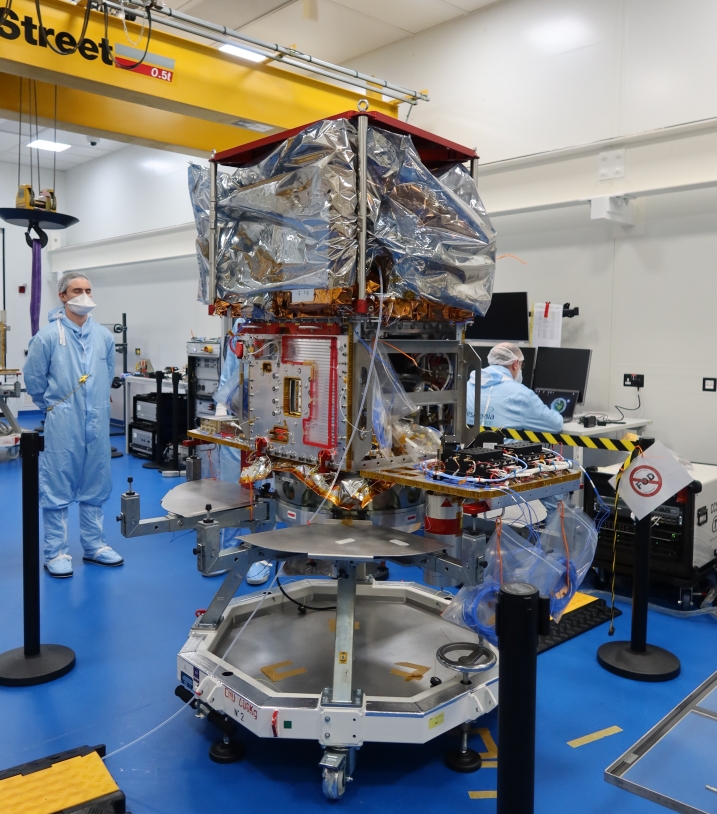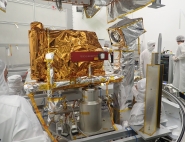Events Archive
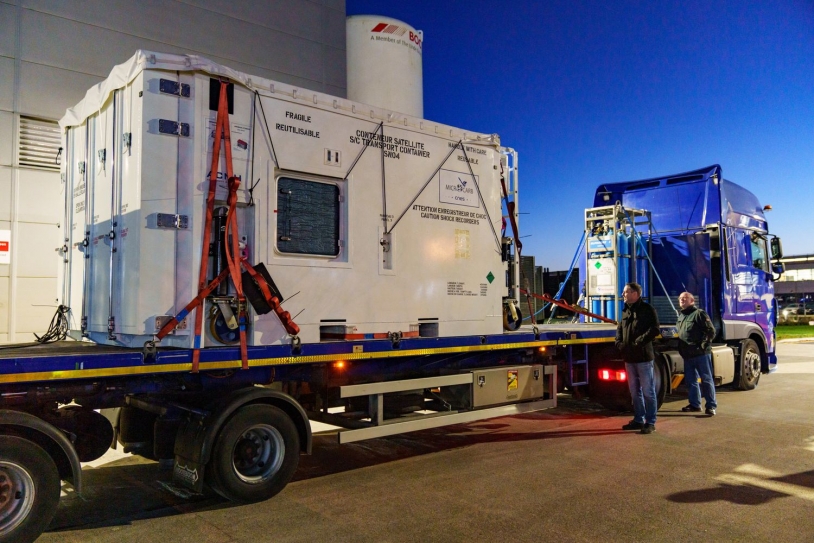
- Delivery of the instrument to Thales Alenia Space in Harwell, UK © CNES
November 2022 : Qualification of the instrument payload following environmental tests at Airbus Defence & Space.
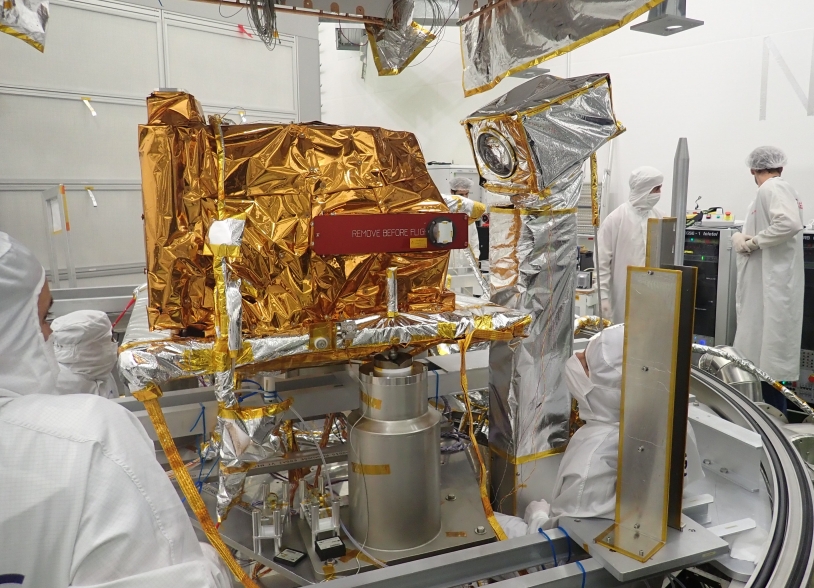
September 2022 : Thermal vacuum tests at Airbus Defence & Space in Toulouse © CNES / Airbus DS 2022
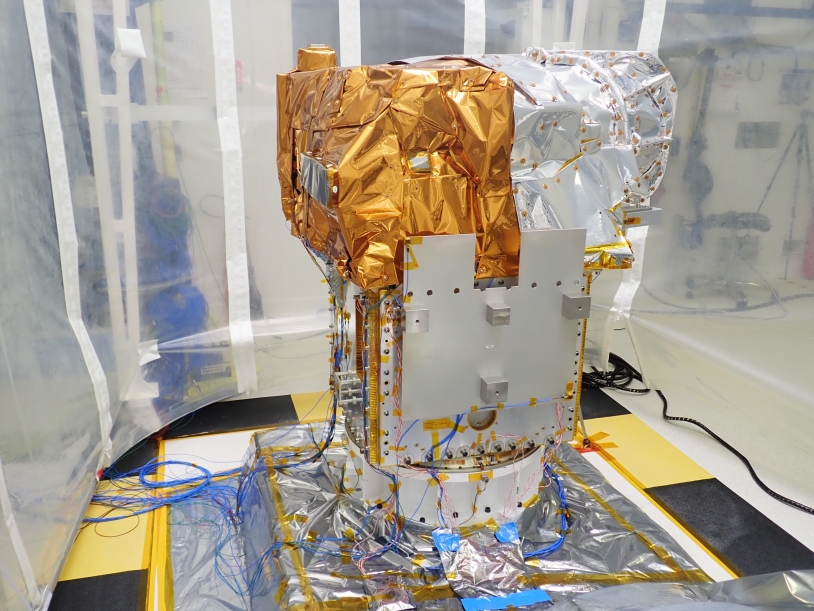
June 2022: Mechanical shock and vibration testing gets underway at Airbus Defence & Space in Toulouse.
© CNES/Airbus DS/2022
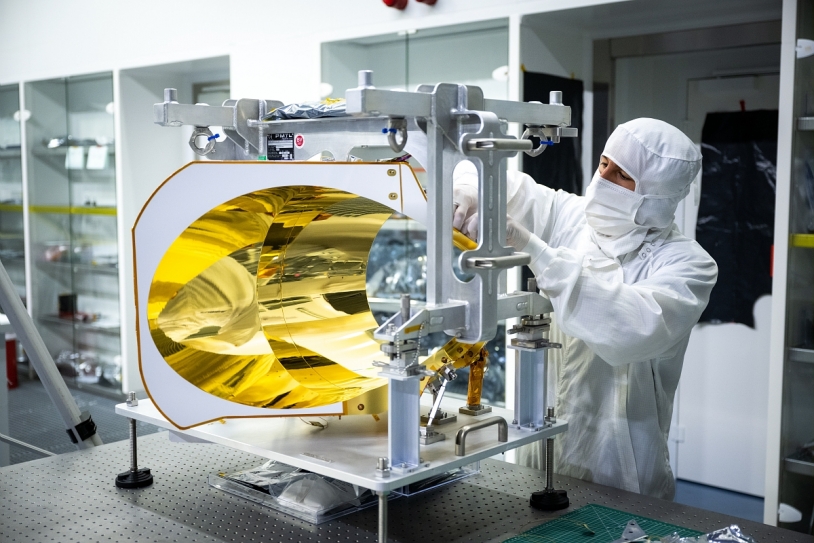
May 2022: The MicroCarb instrument being assembled - Crédit CNES/Airbus DS/Frédéric Lancelot, 2022
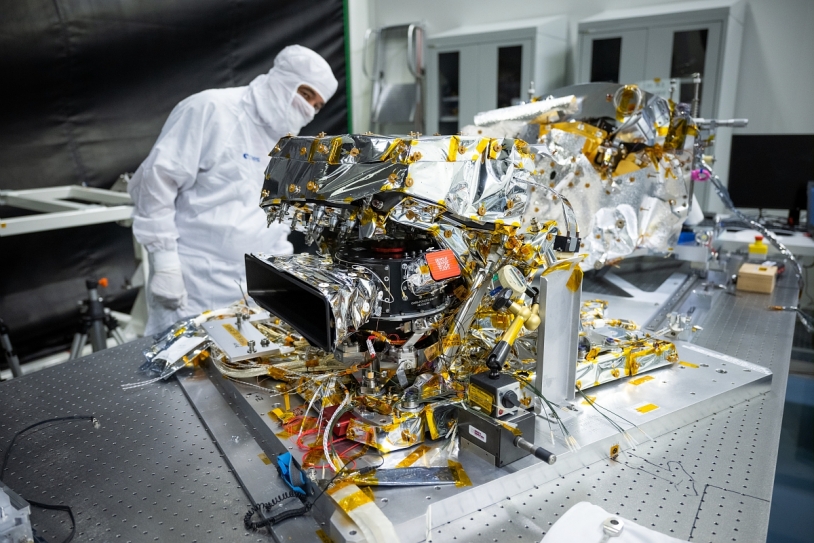
© CNES/Airbus DS/Frédéric Lancelot, 2022
2021 events
Despite the COVID pandemic and Brexit, good progress was made integrating the spacecraft bus, with all systems now installed.

Key instrument integration milestones were reached ahead of environmental tests starting early in 2022.
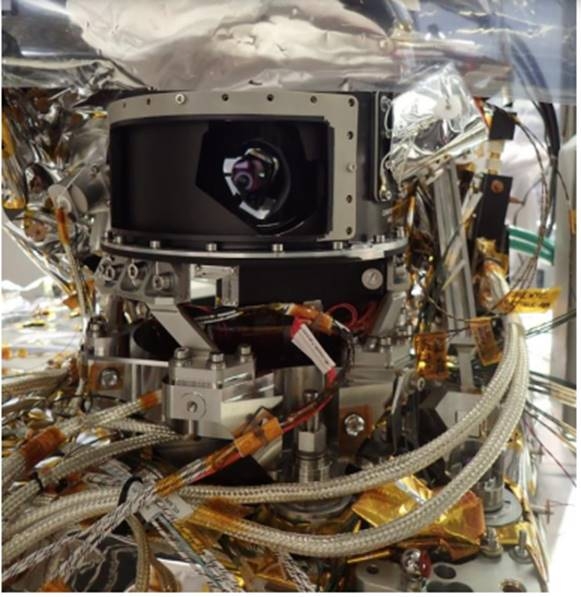
Fully integrated grating spectrometer. Credit: ADS-France
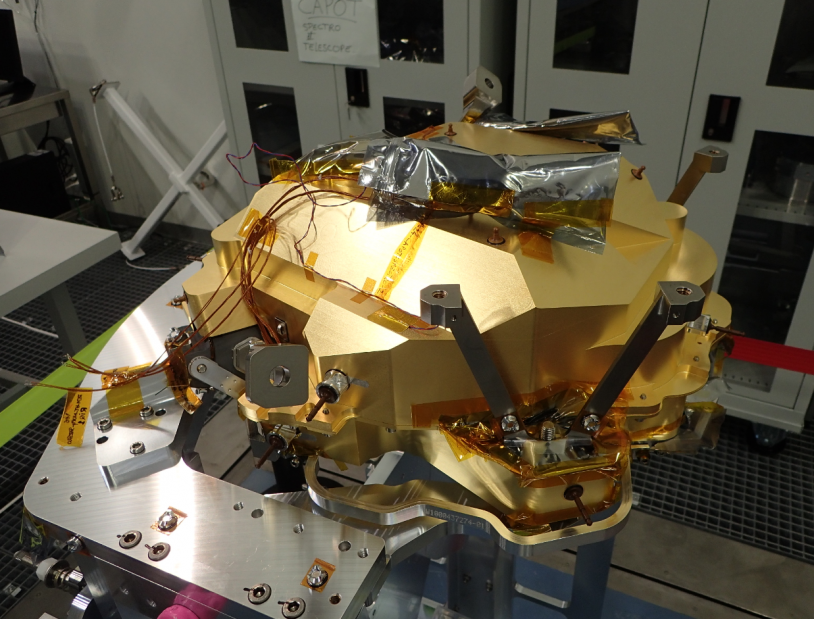
Telescope with its scanning mirror. Credit: ADS-France
May 2021: the second mission performance key point meeting was held, with the orbital simulator now fully functional to combine performance items concerning measurement physics and instrument error.
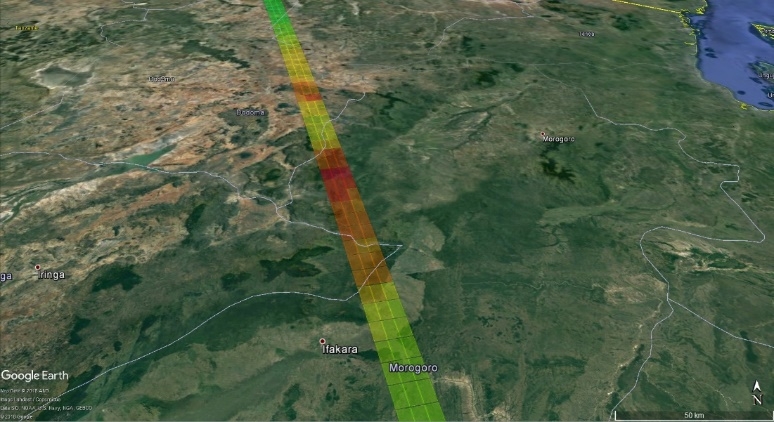
Pixels under the satellite track.
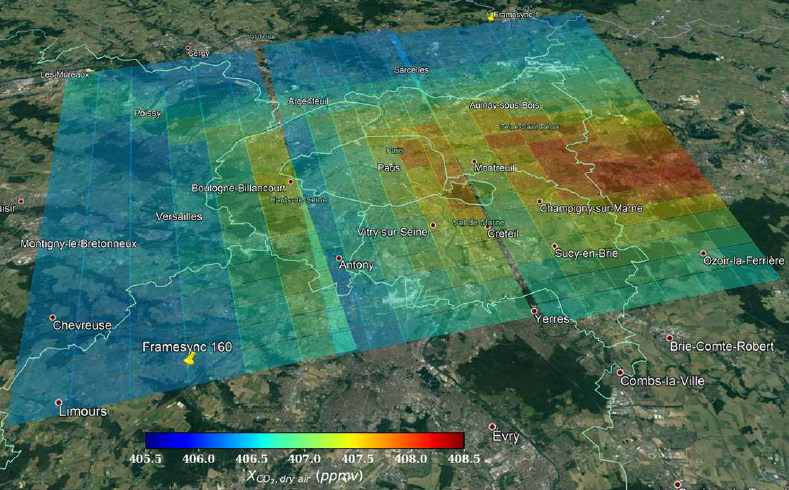
Illustration of City mode (showing Paris) in the orbital simulator.
2020 Events
December 2020: ESA-CNES contract signed for EU funding of development of part of the mission centre, and extended to Eumetsat.
A memorandum of understanding (MoU) was previously signed with Eumetsat defining task sharing for overall exploitation of the mission.
November 2020: Signature of an amendment extending the MoU with UKSA to the end of development and to the exploitation phase.
August 2020: Additional funding released by the Secretariat General for Investment (SGPI) to cover technical issues and schedule slippage, plus a supplement for changes to the instrument to adapt its operating point to the detector’s actual characteristics.
2019 events
Instrument and satellite critical definition reviews completed.
Start of spacecraft bus integration contract at Thales Alenia Space UK, beginning with development and adaptation of ground support equipment for integration at Harwell, near Oxford.
MicroCarb is selected for the European Union’s Horizon 2020 IOD-IOV programme, with funding for the launch and a contribution to development and operation of the mission ground segment. Execution of the IOD-IOV contract is delegated by the EU to ESA.
2017 events
1/07/2017: Following successful completion of the instrument and satellite preliminary design reviews (PDR), and confirmation of funding for phases C, D and E1 by the French government, the project received the go-ahead to move to phase C.
April 2017: Cooperation agreement signed with the UK Space Agency (UKSA) concerning contribution to development of the instrument and integration of the satellite, and participation in the mission science group chaired by PI François Marie Bréon from the LSCE climate and environmental science laboratory.
2015 events
12 August: French government announces through a press release from the Ministry of Ecology, Sustainable Development and Energy, the go-ahead for the programme with funding for the first phase from the PIA future investment programme.
This announcement was made during the COP 21 conference, in Paris.
May 2015: CoSpace, the government-industry space coordination committee, submits proposal to French government for the development of the MicroCarb mission designed to:
- Meet scientific expectations regarding new insights into the mechanisms of CO2 exchange and how they evolve
- Assure continuity of global measurements
- Pave the way for future operational missions
2014 events
CNES proceeds with technical studies to define an even more compact instrument compatible with a micro satellite of less than 200 kg built around CNES's Myriade spacecraft bus.
This goal is reached by reducing the number of detectors using a device capable of multiplexing several bands on a single detector.
This change to the concept is implemented on an optical model of the instrument to verify planned results by analyses.
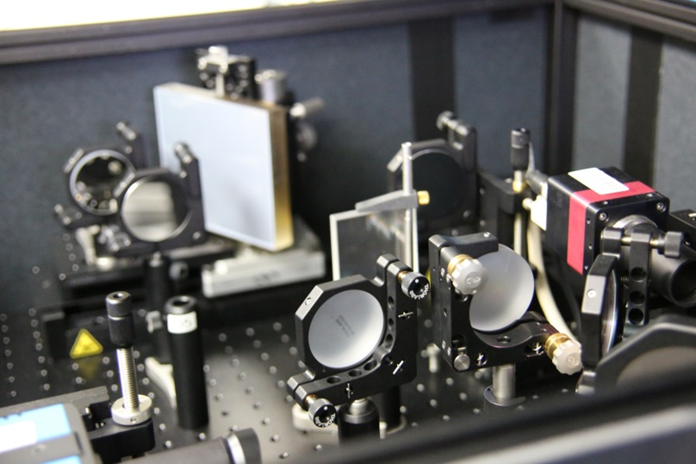
2013 events
Completion of studies at satellite and instrument levels by the two industrial primes Airbus Defence & Space and Thales Alenia Space, as well as studies at system level conducted by CNES.
December 2013: Conclusions of Phase A work are submitted to a review board (Preliminary Requirements Review), which confirmed the technical feasibility of the project within the technical constraints and in compliance with performance requirements.
2011 events
20-21 September 2011: Selection of MicroCarb instrument concept
CNES started technical and scientific studies to demonstrate the feasibility of the MicroCarb mission in mid-2010. One of the main objectives of this Phase A was to select the best instrument concept—a grating spectrometer vs. a static Fourier transform interferometer—to fulfil the mission requirements.
Comparison activities of the two concepts were conducted by Astrium and Thales Alenia Space from February 2011 to September 2011.
One of the main outputs of this first phase was to propose a payload definition fulfilling mission requirements and compatible with a CNES Myriade Evolution microsatellite bus.
A MicroCarb Mission Key Point held meeting on 20 and 21 September 2011 allowed CNES to confirm concept instrument selection. Some 40 people from CNES and the MicroCarb science team from different laboratories (LSCE, LPMAA, LMD) with the PI F.M. Bréon from LSCE took part in the meeting.
MicroCarb Mission Key Point participants and presentations
The instrument concept was selected on the basis of:
- instrument and satellite industry studies
- level 2 (CO2 concentration) performances evaluation based on CNES inversion results performed for each concept configuration
- evaluation of the different spectral bands' contribution to the accuracy of CO2 inversion algorithms
The choice was also made in close cooperation with the mission science team and driven by comparison for each concept of estimated performance on land and ocean surface flux retrievals.
A grating spectrometer instrument concept with three spectral bands (0.76 µm, 1.6 µm and 2.0 µm) has been formally selected for the MicroCarb mission.
A consolidation phase at satellite and instrument level on the selected concept will now start in October 2011, working towards a preliminary design definition and associated performance budget in 2012. Some technological validation activities on some subsystems (grating, scrambler) critical to performance will also be performed.
February 2011: Start of satellite industrial studies and comparison of instrument concepts
The consultation process completed end 2010 by CNES for satellite and instrument concept studies led to the selection of two contractors that submitted proposals, i.e. Astrium and Thales Alenia Space. This request for proposals followed a call for tenders in the Official Journal of the European Union (OJEU), which selected two prime contractors for the FRP phase.
The kick-off meetings with the two contractors took place in February 2011. These meetings enabled CNES to present the latest updates to the satellite specifications and the two instrument concept requirements. The comparison of the two concepts—static Fourier transform interferometry versus dispersive grating spectrometer— - will be covered by the first part of phase A.
February 2011: Constitution and first meeting of the mission group
The first meeting of the MicroCarb Mission Group took place at CNES headquarters on 1 February 2011 and formalized the constitution of the Mission Group with representatives from different laboratories: LSCE, LPMAA, CESBIO, etc. around the PI F.M. Bréon from LSCE.
One of the meeting's objectives was for CNES to present the general programmatic context of the mission as well as the project status. Discussions also covered the definition of the scientific studies needed in 2011 and 2012, in parallel with the instrument development, for a better definition of the mission.
27 January 2011: MicroCarb/OCO/A-Train meeting
Meetings with NASA's OCO-2 (Orbiting Carbon Observatory) mission team to measure CO2 took place on 26 and 27 January 2011. OCO-2 is under development and is scheduled to replace, in 2013, the OCO satellite that was lost on launch in February 2009. These fruitful discussions for MicroCarb, thanks to the experience acquired by the OCO-2 team, were very useful to understand the issues relative to the dispersive grating instrument concept. These interesting discussions also concerned calibration activities and CO2 retrieval algorithms.
These discussions took place during the operations coordination meetings between the agencies involved in the Afternoon-–Train or A-Train: NASA, NOAA, JAXA, CNES, etc. OCO2, one of the next missions to join the A-Train, was in charge of hosting and organizing these meetings in Pasadena (Los Angeles). Attending these inter-agency coordination meetings gave MicroCarb the opportunity to confirm our interest in joining the A-Train due to synergies with the other missions studying the atmosphere.
